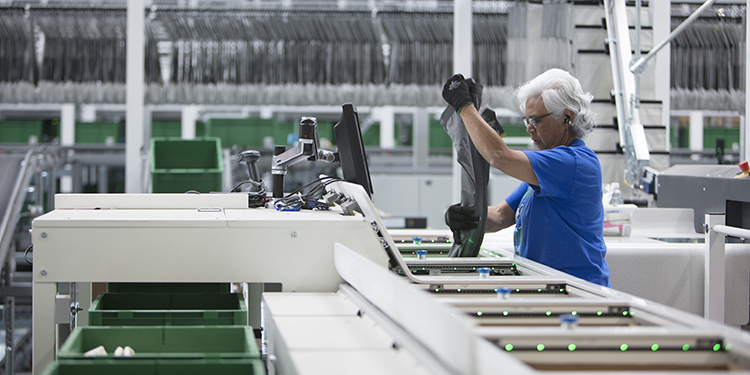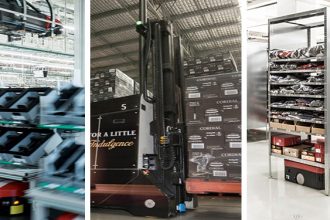
Pre-pandemic, e-commerce fulfillment centers and distribution centers serving a variety of sectors struggled to attract, hire, and retain qualified labor. Even among full-time hires, attendance could be spotty. And, in spite of the unprecedented job losses and furloughs over the past few months, many warehousing jobs are expected to remain unfilled as people return to their previous careers in foodservice, hospitality, tourism and other industries most impacted by shutdowns. Addressing these warehouse workforce challenges are a range of goods-to-person automated storage and retrieval systems (ASRS) that help to optimize inventory storage density, enhance picking accuracy, and boost the efficiency and productivity of an existing workforce during both normal periods and peak times without hiring a vast influx of seasonal help (rather than replacing associates) in a variety of ways.
To facilitate a goods-to-person picking approach, some ASRS solutions are designed specifically to store cartons or totes of items required to fill the one- and two-line orders commonly found in e-commerce applications. Often shuttle- or robotic-based, these highly dense, cubic storage systems are directed by the facility’s warehouse management system (WMS), which sends the orders to the system. The warehouse control system (WCS) or warehouse execution system (WES) executes the routing of totes of items needed to fill orders to associates stationed at dynamic picking workstations. By presenting the items to the picker, the travel time associated with walking from pick to pick in a traditional order fulfillment operation is eliminated, making workers more productive and efficient, as well as reducing fatigue.
When the source tote arrives at the picking station, it is presented at the proper ergonomic (waist) height. This removes the need for a picker to bend, stretch, stoop, or reach to retrieve the needed item — particularly key to accommodating the physical limitations of an aging workforce. Instead, the associate simply reaches into the tote to grab the appropriate quantity of the item, then places it into an order tote. ASRS equipment retrieves the various source totes to be presented at the workstation, which is frequently outfitted with a touchscreen or other monitor that displays an image of the required item for visual confirmation of the correct pick. Additionally, illuminating modules or projected beams of light can be used to indicate both source and order totes to ensure fast, accurate pick and place.
Additionally, pocket (or pouch) sorters are another goods-to-person solution that eliminates walking and travel time. Capable of high-speed handling, these systems consist of multiple carriers, each outfitted with a single pouch hanging beneath. The carriers travel via rollers on rails mounted overhead to maximize the facility’s storage cube. Soft and flexible, each pocket handles single units weighing typically under 10 pounds, making them ideal for storing a pair of shoes, a shirt, a hat, a purse, or other apparel item.
Each pocket is individually identified and controlled for movement into buffer loops or storage lanes as needed. Pockets arrive at a goods-to-person packing workstation with unique items grouped by order and sequenced through a matrix sortation for proper placement into the shipping container (the heaviest item is placed in the carton first, for example). This function speeds packing processes while eliminating picking errors.
Further, goods-to-person ASRS solutions offer high-speed handling and high-volume throughput, enabling operations to meet increasingly shorter timeframes for order delivery without the need to add headcount. Because they are easy to use, training time is significantly reduced. That allows an operation using temporary or seasonal labor to meet the demands of peak periods to more quickly realize maximum efficiency from new workers. As labor costs continue to rise and the cost of the technologies comes down, typical return on investment (ROI) periods are averaging three to five years — a significantly shorter payback period than the automated systems of a decade ago.
Finally, utilizing goods-to-person ASRS solutions allows pickers to remain in fixed locations, supporting adherence to the CDC’s social distancing guidelines. This greatly reduces the chances of employees crossing paths at multiple points within a warehouse. For additional safeguarding, plexiglass partitions can be placed between stations, further minimizing the risk of cross-contamination.
Looking for more information about how goods-to-person ASRS solutions can address your operation’s workforce challenges? Contact the members of the Automated Storage and Retrieval Systems Industry Group of MHI.



